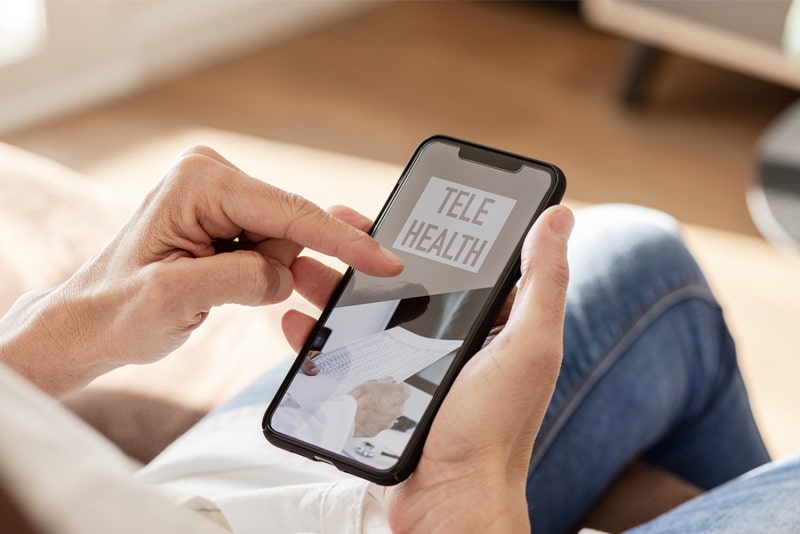
Telehealth adoption reached a new high during the Covid-19 pandemic. In February 2020, the Centers for Disease Control and Prevention (CDC) issued guidance recommending that health care providers in areas affected by the COVID-19 pandemic adopt social distancing practices and offer virtual care through telehealth. Medical transcription companies have risen to the challenge and successfully helped providers manage their EHR documentation. The Centers for Medicare and Medicaid Services (CMS) supported telehealth in a big way by waiving various restrictions in response to the public health emergency. According to a study published by the CDC, approximately 1,629,000 telehealth encounters occurred in the first 3 months of 2020 (early pandemic period), compared with about 1,084,000 encounters during the same period in 2019 – a 50% increase overall.
Telehealth is a useful tool to treat various medical conditions. According to telemedicine company Chiron, virtual care is an ideal option for follow-ups in the following areas:
- Management of chronic conditions
- Medication adjustments
- Reviewing abnormal labs or imaging
- Minor urgent care
- Postop follow-up
Follow-up is an essential element of patient care. There are two main benefits to conducting follow-up care: first, follow-up keeps patients healthier and promotes positive outcomes. Second, regular post-discharge check-ins drives better compliance and can help reduce hospital readmissions. Without effective follow-up, conditions like diabetes and heart disease can have a significant impact on patients’ health and lifestyle.
Recent reports point to the viability of virtual care for follow-up care. A study published in the American Journal of Managed Care reported that 79 percent of the patients said that finding a convenient time for a follow-up telemedicine visit was easier than for a conventional office visit. Up to 52.5 percent of clinicians also reported that telemedicine visit was more efficient compared to the traditional office visit.
- Recovery after Surgery: Studies have reported that using telemedicine for follow-up can improve patient outcomes for surgery recovery. Follow-up provided via virtual platforms offers many benefits for convalescent patients, those who have mobility challenges and people who have a busy lifestyle.
- Diabetes: Diabetes self-management is closely tied to lifestyle modifications. Monitoring and follow-up for this common chronic disease can be effectively accomplished through telehealth. A randomized controlled trial that evaluated the use of telehealth for managing patients with type 2 diabetes found that patients who were monitored virtually had better outcomes than those in the control group (www.healthrecoverysolutions.com). The telehealth system allowed the nurse case manager to track the patients virtually in real time and alter medication dosage as needed, under a physician’s supervision. At 6 months follow up, it was found that patients in the telehealth intervention group had:
- Notably lower HbA1c levels than the usual care group
- A significantly faster rate of decline in HbA1c levels compared to the usual care group
- Better adherence to therapy
- Improved patient-provider communication
Importantly, the study found that follow-up care via telehealth improved patient adherence in many ways. Patients could easily report their daily blood glucose levels using the telehealth platform. The healthcare provider could quickly evaluate the patient’s status and titrate medications when necessary. Telehealth also promoted regular communication between the patients and the provider.
- Orthopedic Care: A study published in the Journal of Clinical Orthopaedics and Trauma in October 2020 found that telemedicine emerged as an effective follow-up option for providing patients with important information about orthopedic self-care and medications – without a hospital visit. Among the patients using telemedicine, 71.43% could be managed without needing physical visits to the outpatient-department and patient satisfaction rate was 92% among those who availed telemedicine. Physical outpatient visits were recommended only when physical exam was needed or patient-physician communication failed. The researchers concluded that virtual care can effectively reduce the need for physical visits to outpatient-departments for follow up of orthopedic patients.
Providing timely follow-up care is very important. Medical transcription services ensure documentation of the physician’s narrative in the EHR. With complete medical records and EHR integrated telehealth, healthcare providers can provide quality patient care, including follow-up.


